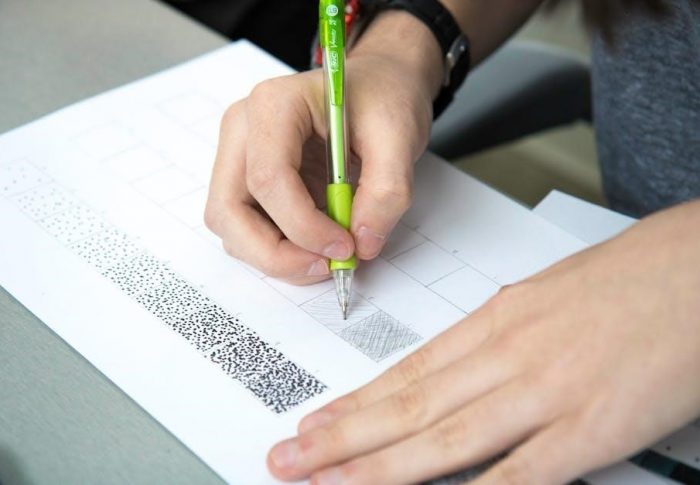
the princess and the pea pdf
The Princess and the Pea PDF: An Overview
Explore the timeless tale of “The Princess and the Pea” via readily accessible PDF versions․ Discover its origin, morals, and adaptations online today!
Original Story and Author
Authored by Hans Christian Andersen in 1835, “The Princess and the Pea” is a classic fairy tale featured in his first collection, ‘Eventyr, fortalte for Born․’
Hans Christian Andersen and His Fairy Tales
Hans Christian Andersen, a celebrated Danish author born in 1805, is globally renowned for his timeless fairy tales that continue to captivate readers of all ages․ His stories, characterized by their simple yet profound narratives, often explore themes of identity, acceptance, and the triumph of good over adversity․ “The Princess and the Pea,” first published in 1835 as part of Andersen’s initial collection, “Tales, Told for Children,” exemplifies his distinctive storytelling style․ Andersen’s fairy tales are not merely children’s stories; they are rich allegories that offer insightful commentary on human nature and societal values․ His works have been translated into numerous languages and adapted into various forms of media, including books, plays, musicals, and films, solidifying his legacy as one of the most influential figures in children’s literature․ Andersen’s ability to blend fantasy with reality, coupled with his poignant exploration of universal themes, ensures that his fairy tales remain relevant and cherished for generations to come, inspiring both children and adults to reflect on the world around them and the values that truly matter․ His stories are a window into a world of imagination, morality, and enduring hope, making him a literary icon․

Plot Summary
The story follows a prince searching for a “real” princess․ A princess arrives during a storm, and the queen tests her sensitivity using a pea under mattresses․
The Prince’s Quest for a Real Princess
The narrative begins with a prince consumed by a singular desire: to find and marry a princess․ However, not just any princess would do; he sought a “real” princess, one possessing an undeniable authenticity of royal bearing․ Driven by this yearning, the prince embarks on a worldwide journey, traversing kingdoms and encountering numerous princesses along the way․ Despite the abundance of potential brides, he consistently finds himself disappointed․ Each princess he meets seems to fall short of his ideal, lacking that certain quality that would definitively mark her as a true member of royalty․ His travels lead him to countless castles and palaces, where he is met with lavish displays of wealth and beauty․ Yet, none of these external trappings can mask the perceived imperfections he finds in each princess․ One might be deemed too haughty, another too frivolous, and yet another lacking in the sensitivity he believes a real princess should possess․ Discouraged but not defeated, the prince continues his relentless pursuit, clinging to the hope that somewhere in the vast world, his true princess awaits․ His quest becomes a testament to his unwavering belief in the existence of genuine royalty, and his determination to find it guides him onward, through storms and across continents, in search of his perfect match․
The Test with the Pea
One stormy night, a young woman arrives at the prince’s castle, seeking shelter from the tempestuous weather․ She claims to be a princess, but her bedraggled appearance raises doubts among the royal family․ Determined to ascertain the truth of her claim, the queen devises a subtle yet telling test․ Unbeknownst to the princess, the queen places a single, small pea on the bottom of a bed․ She then covers the pea with twenty mattresses and twenty eiderdown beds, creating a seemingly comfortable and luxurious sleeping arrangement․ The princess is then invited to sleep in this prepared bed for the night․ The following morning, the queen inquires about the princess’s sleep․ The princess recounts a night of utter discomfort, claiming she was unable to sleep a wink due to something hard and uneven in the bed․ She describes feeling bruised and battered, as if she had been lying on stones․ The queen, hearing this testimony, is satisfied․ Only a real princess, with her delicate and refined sensibilities, would be able to detect such a tiny imperfection through so many layers of bedding․ The pea, therefore, serves as a symbolic test of true royalty, revealing the princess’s inherent sensitivity and proving her noble lineage․ The princess’s discomfort confirms her royal status, validating her claim and paving the way for her to potentially become the prince’s bride․
Themes and Morals
The story explores themes of sensitivity, class, and the true meaning of royalty․ It questions superficial judgments and highlights inner qualities, not just appearance․
Defining “Real” Royalty
The story “The Princess and the Pea” cleverly challenges conventional notions of royalty․ It prompts us to consider what truly defines a “real” princess․ Is it lineage, upbringing, or something more intrinsic? The queen, in her quest to find a suitable bride for her son, devises a peculiar test to ascertain the princess’s authenticity․ This test, involving a single pea hidden beneath a stack of mattresses, becomes a symbolic representation of the sensitivity and refinement expected of a true royal․
The tale suggests that genuine royalty is not merely about titles or outward appearances, but rather about an inherent delicacy and awareness․ The princess’s ability to detect the pea, despite the layers of bedding, signifies her exceptional sensitivity, which the queen interprets as proof of her royal blood․ However, the story leaves room for interpretation․ Some may argue that the test is absurd and that true royalty should be defined by character, compassion, and leadership rather than physical sensitivity․ Others might see the sensitivity as a metaphor for emotional intelligence and empathy, qualities that are valuable in any leader, royal or otherwise․ Ultimately, “The Princess and the Pea” invites readers to reflect on their own understanding of what constitutes “real” royalty and to question the superficial criteria often used to judge others․

Adaptations and Interpretations
The enduring charm of “The Princess and the Pea” has spurred diverse adaptations, from stage productions and musicals to modern interpretations of the classic tale․
Stage and Musical Adaptations
The simple yet captivating narrative of “The Princess and the Pea” has proven to be a fertile ground for stage and musical adaptations․ Its core themes of royalty, sensitivity, and the search for truth resonate well with audiences of all ages, making it a popular choice for theatrical productions․ These adaptations often amplify the humor and charm of the original story, while also exploring deeper meanings through music, dance, and dramatic interpretation․ Many versions exist, ranging from small-scale children’s plays to grand, elaborate musical productions․ The characters are brought to life with vibrant costumes and creative stage designs, immersing the audience in the fairytale world․ These adaptations allow for a fresh perspective on the classic tale, often incorporating modern elements or unique artistic visions․ Furthermore, the story’s inherent moral lessons about judging character and embracing individuality are reinforced through the dramatic medium, making it an engaging and thought-provoking experience for viewers․ Whether it’s a community theater performance or a professional musical, “The Princess and the Pea” continues to enchant audiences through its various stage and musical interpretations․ The story’s adaptability ensures its continued relevance in the world of performing arts․

Educational Use
“The Princess and the Pea” serves as a valuable tool for education, promoting reading comprehension and sparking creativity through diverse learning activities․
Reading Comprehension and Activities
The enduring popularity of “The Princess and the Pea” makes it an excellent resource for enhancing reading comprehension skills in children․ Its simple yet engaging plot allows young readers to easily grasp the narrative, identify key characters, and understand the central theme of discerning true quality beneath superficial appearances․ Teachers and parents can utilize the story to facilitate discussions about the meaning of “real” royalty, the importance of sensitivity, and the power of observation․
Furthermore, “The Princess and the Pea” provides a springboard for various creative activities․ Children can be encouraged to retell the story in their own words, draw scenes from the tale, or even create their own versions with different characters and settings․ The story also lends itself well to dramatization, allowing children to act out the roles of the prince, the queen, and the princess․ Additional activities might include designing a “princess test” or writing a letter from the princess describing her experience․ These interactive exercises not only reinforce reading comprehension but also foster imagination, critical thinking, and communication skills, making learning both enjoyable and effective․
Availability of PDF Versions
Numerous websites offer free PDF downloads of “The Princess and the Pea,” granting easy online access to this classic tale for educational and personal enjoyment․
Free Downloads and Online Access
Accessing “The Princess and the Pea” in PDF format has never been easier, thanks to the widespread availability of free downloads and online viewing options․ Numerous websites and digital libraries offer the story for free, catering to a diverse audience seeking convenient access to this beloved fairy tale․ Whether you’re a student, teacher, parent, or simply a fan of classic literature, you can readily find a PDF version to suit your needs․ These digital versions often come in various formats, including illustrated editions, text-only versions, and even interactive versions with audio narration․ Online platforms also provide options for reading the story directly in your web browser, eliminating the need for downloads․ This accessibility ensures that “The Princess and the Pea” remains a readily available resource for learning, entertainment, and cultural enrichment, fostering a continued appreciation for Hans Christian Andersen’s timeless storytelling․ Enjoy the classic tale whenever and wherever you desire with effortless access through these digital resources․
Illustrations and Different Editions
Discover various editions of “The Princess and the Pea,” exploring the impact of illustrations on story perception and the diverse artistic interpretations available․
Impact of Visuals on Story Perception
The illustrations accompanying “The Princess and the Pea” profoundly shape our understanding and emotional connection to the narrative․ Visual interpretations, ranging from classic drawings to modern digital art, influence how we perceive the characters, the setting, and the overall message of the story․ A particular illustration might emphasize the queen’s cunning, the princess’s sensitivity, or the opulence of the palace, thereby highlighting different aspects of the tale․ For younger readers, vivid and engaging visuals can make the story more accessible and memorable, while older readers might appreciate more sophisticated and symbolic artistic choices․ Different editions of the story often feature vastly different artistic styles, reflecting the cultural and historical context in which they were created․ Examining these variations allows us to appreciate how visuals contribute to the enduring appeal and multifaceted interpretations of this classic fairy tale․ Consider how a whimsical, cartoonish style might appeal to children, while a more realistic or dramatic style could resonate with adults․ The choice of colors, the depiction of the characters’ expressions, and the overall artistic composition all play a crucial role in shaping our emotional response and understanding of the story’s themes․

Cultural Impact and Legacy
“The Princess and the Pea” has left an indelible mark on popular culture, extending far beyond the realm of children’s literature․ Its simple yet profound narrative has resonated with audiences for generations, inspiring countless adaptations, parodies, and reinterpretations across various media․ The story’s central theme – the questioning of superficial appearances and the importance of inner qualities – continues to be relevant in contemporary society․ The image of the princess, unable to sleep due to a single pea beneath a mountain of mattresses, has become a widely recognized symbol of sensitivity, refinement, and the hidden burdens of privilege․ The tale’s influence can be seen in films, television shows, and even advertising, where the “pea test” is often used as a metaphor for discerning true quality or authenticity․ Furthermore, “The Princess and the Pea” has served as a springboard for discussions about social class, gender roles, and the nature of royalty․ Its enduring appeal lies in its ability to spark critical thinking and encourage readers to look beyond the surface, fostering a deeper understanding of human nature and the complexities of the world around us․ The story’s legacy is a testament to the power of simple narratives to convey profound truths and inspire lasting cultural impact․ It also highlights the importance of empathy and understanding in a world often driven by superficial judgments․ The tale reminds us to value inner qualities over outward appearances, and to appreciate the sensitivities of others․





